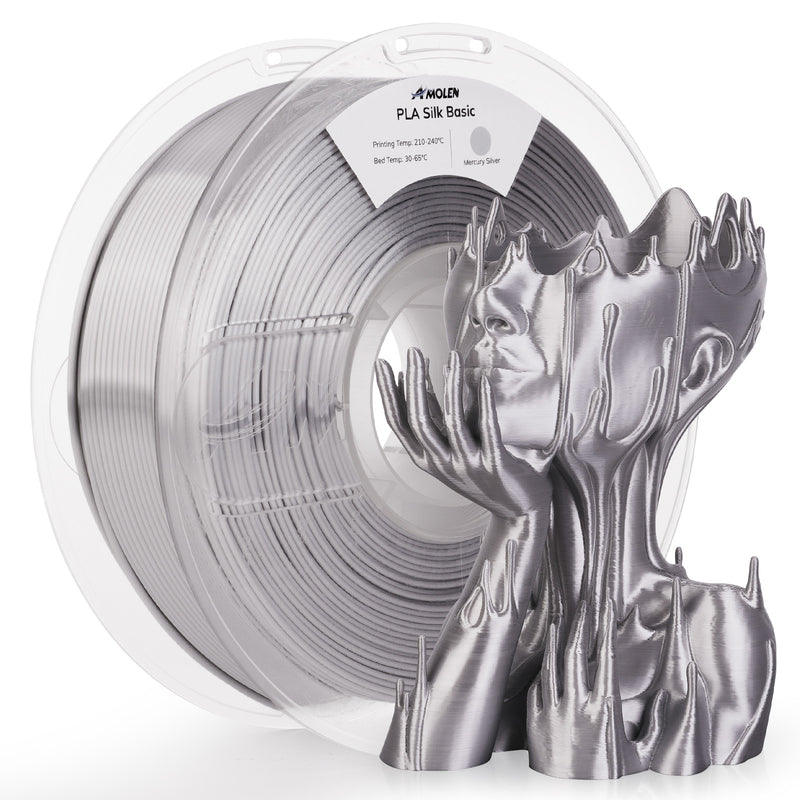Unlock the Secrets to Choosing the Perfect PETG and PLA Filaments!
In the world of 3D printing, the choice of materials can significantly impact the final product. Two of the most popular filament types among enthusiasts and professionals alike are PETG and PLA. Each of these materials has carved its niche, thanks to their unique properties and versatility. PLA, or Polylactic Acid, is favored for its ease of use and eco-friendliness, making it a go-to for beginners and those focused on sustainability. On the other hand, PETG, or Glycol-Modified Polyethylene Terephthalate, offers exceptional durability and strength, appealing to those who require functional parts. This article aims to compare these two filament types, helping you navigate the options available for purchasing PETG and PLA filaments, ensuring you make an informed decision based on your specific needs.

Understanding PETG and PLA Filaments
PETG and PLA filaments are both widely used in the 3D printing community, but they differ significantly in composition and characteristics. PLA is derived from renewable resources such as cornstarch or sugarcane, making it biodegradable and a popular choice for environmentally conscious users. Its chemical structure allows for easy printing, producing excellent results with minimal warping. On the other hand, PETG is a modified version of PET, a common plastic known for its toughness and flexibility. This filament is resistant to impact and has a higher temperature tolerance than PLA, making it suitable for functional applications. When it comes to printability, PLA generally wins for beginners due to its lower printing temperature and straightforward settings, whereas PETG may require a bit more finesse to achieve optimal results.
Comparative Analysis of PETG and PLA
When comparing PETG and PLA, several key differences emerge that can influence one's choice. One of the standout features of PLA is its printability; it adheres well to the print bed, allowing for fine details and smooth finishes. However, it is not as durable as PETG. While PLA can become brittle over time and is sensitive to heat, making it unsuitable for items exposed to high temperatures, PETG excels in these areas. It offers better impact resistance and can withstand higher temperatures without warping. Moreover, PETG has a lower tendency to string during printing, which can result in cleaner outputs. On the environmental front, PLA takes the lead as it is biodegradable, whereas PETG is recyclable but not biodegradable, which could be a concern for those prioritizing sustainability.
Print Quality and Performance
The print quality and performance of PETG and PLA can vary significantly based on the settings and the printer used. PLA is renowned for its ability to produce intricate designs with sharp details and a smooth surface finish. However, its susceptibility to warping can pose challenges, especially in larger prints. Conversely, PETG's layer adhesion is impressive, often resulting in strong, durable prints with less likelihood of warping or stringing. Many of my friends who use PETG have noted that while it requires a bit more effort in tuning the printer settings, the result is often a robust final product that can endure various applications.
Applications and Use Cases
Both PETG and PLA have their unique strengths in different applications. PLA is often used for prototypes, decorative items, and educational projects due to its ease of use and vibrant colors. It is also a favorite among hobbyists for creating models and artistic prints. On the other hand, PETG shines in functional applications where strength and durability are crucial. It is commonly used for creating mechanical parts, containers, and outdoor items that require resistance to elements. For instance, a friend of mine once created a set of outdoor planters using PETG, and they have held up beautifully against the weather, showcasing the filament’s durability.
Factors to Consider When Choosing Filaments
When deciding between PETG and PLA, several factors come into play. First, consider your printer's compatibility; some machines may not handle PETG as effectively as PLA. Next, reflect on your project requirements—do you need a strong, functional part, or is a decorative model your goal? Additionally, think about the environment where the printed item will be used. If it will be subject to high temperatures or outdoor conditions, PETG might be the better choice. Lastly, personal preferences regarding ease of use and finish quality should guide your decision. It can be beneficial to experiment with both filaments to see which aligns better with your printing style and needs.
Final Thoughts on Filament Selection
In conclusion, understanding the differences between PETG and PLA filaments is essential for making informed choices that align with your 3D printing projects. Each filament offers unique advantages and caters to different needs, whether you prioritize ease of use, eco-friendliness, durability, or specific applications. As you embark on your 3D printing journey, take the time to assess your requirements and preferences, which will ultimately lead you to the right filament choice. Explore your options thoughtfully and enjoy the creative possibilities that PETG and PLA can provide!







